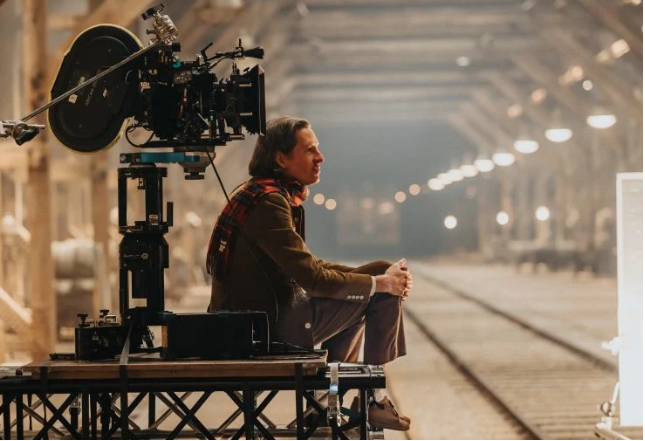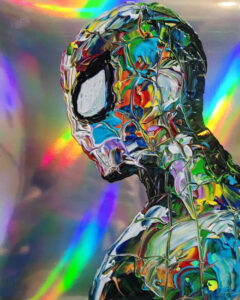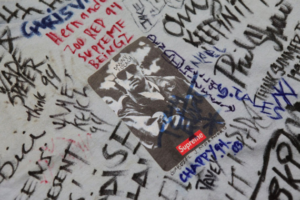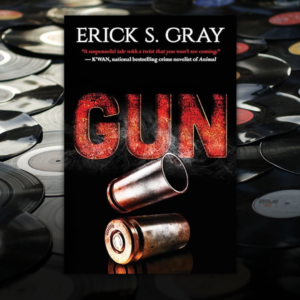“I don’t want to capture reality—I want to create my own planet.”
— Wes Anderson
In the summer of 2025, Wes Anderson will unveil what may well be the crown jewel of his cinematic kingdom. The Phoenician Scheme, his latest meticulously composed fantasia, marks a leap into unfamiliar terrain: the Cold War espionage genre. But if anyone can smuggle pastel absurdism and antique heartbreak into the smoke-filled alleys of spycraft, it’s Anderson.
Starring Benicio del Toro, Florence Pugh, Barry Keoghan, and a who’s-who of Anderson regulars, the film is a Cold War-era comedy-drama set against the backdrop of antiquities smuggling, multi-national surveillance, and existential drift. Shot on location in the Swiss Alps and at a purpose-built Prague soundstage that reportedly rivals Pinewood in its obsessive design, the project is as logistically audacious as it is emotionally ambitious.
From Budapest to Beirut: Anderson’s Political Pivot
Fans of The Grand Budapest Hotel (2014) may recall that film’s flirtation with fascism and encroaching war. But The Phoenician Scheme—co-written with Roman Coppola—is more than a tonal cousin. It represents Anderson’s first full-bodied engagement with geopolitics, espionage, and the structures of state secrecy.
If Grand Budapest was a tragicomic ode to a vanished Europe, Phoenician is a cipher box of contradictions. It is both an absurdist parody of Cold War thrillers and a serious meditation on identity, loyalty, and imperial theft. Set across three time periods—1947, 1968, and 1989—it uses three film stocks (16mm, 35mm, digital) to demarcate timelines with surgical precision.
According to Coppola, the plot orbits a stolen Phoenician amphora linked to an ancient intelligence network. Del Toro plays Hadrien D’Aubigny, a melancholy philatelist recruited into espionage after the artifact vanishes from a museum in Beirut. As factions clash over its symbolic and strategic value, the film traces his moral unspooling across decades.
Aesthetic Intelligence: Design as Character
Production designer Adam Stockhausen, who won an Oscar for Grand Budapest, returns with career-best work. The detail is staggering.
- A 1:3 scale replica of 1968 Beirut—complete with crumbling rooftops, rooftop radio towers, and hand-painted signage in four languages—was built from scratch.
- A color-coded intelligence headquarters spans 47 distinct hotel rooms, each mapped to a different agency (MI6: mustard yellow; Mossad: deep teal; KGB: rust red).
- A functional miniature train delivers props between sets to maintain flow and continuity.
Cinematographer Robert Yeoman shot the 1989 timeline in digital, using subtle VHS filters for surveillance room footage. The 1968 scenes are on lush 35mm film, while the earliest sequences—shot in flickering 16mm—feel lifted from a lost ethnographic documentary.
“We wanted each time period to feel like its own reality,” says Yeoman. “But also to feel like a reality Anderson created. That’s the paradox—his world is artificial, but emotionally authentic.”
Casting: A Kaleidoscope of Faces
In classic Anderson fashion, the cast blends familiar faces with unpredictable new additions.
- Benicio del Toro gives what insiders are calling a career-redefining performance. His D’Aubigny is a tragicomic cipher—equal parts George Smiley and Buster Keaton.
- Florence Pugh plays Marianne, a rogue archivist and double agent who conceals microfilm in handmade marzipan. She reportedly studied philately and learned to forge vintage stamps for the role.
- Barry Keoghan, channeling both menace and mirth, is cast as a hotel concierge with ties to six intelligence agencies.
- Tilda Swinton appears in all three timelines as a spectral historian. Her presence serves as the film’s philosophical spine, anchoring the narrative with elliptical monologues on identity and memory.
- A French mime, uncredited in early listings, plays “The Librarian”—a wordless operative who communicates entirely through gestures and chalkboard diagrams.
Jeff Goldblum, in a blink-and-you’ll-miss-it cameo, delivers an entire monologue in reconstructed Phoenician—“with such commitment,” said Anderson, “you could believe he was reciting Homer.”
Zero CGI: Analog Intrigue in a Digital Age
Anderson’s famous resistance to CGI reaches new heights here. Every explosion is practical. Every miniature is hand-crafted. Even the surveillance screens were shot using period-accurate monitors fed real-time footage via closed-loop analog systems.
Camera setups took hours. A single hallway shot—where a bullet travels through five rooms in a single take—was rehearsed for weeks. It’s a subtle homage to Antonioni’s The Passenger, but with a distinctly Anderson twist: the bullet passes through a diorama factory, a pastry kitchen, and finally an empty stamp museum.
Anderson’s reasoning? “CGI speeds things up. But espionage is slow. I want the audience to feel the patience it takes to know nothing for certain.”
Espionage as Existential Crisis
What separates The Phoenician Scheme from past Anderson works isn’t just its genre. It’s the depth of moral ambiguity. D’Aubigny is not a hero. He’s a lost man recruited because no one would miss him. The amphora he’s chasing—believed to hold coded instructions for an ancient spy ring—may be a complete fabrication.
The result is a film less concerned with plot twists than with personal unraveling. As Pugh’s character says: “All secrets rot in silence. That’s why we whisper them into other people.”
The emotional heart lies in a recurring motif: broken objects made whole. We watch D’Aubigny painstakingly reassemble the amphora across decades, each shard glued with less precision than the last. It’s not about restoration. It’s about ritual.
Historical Realism: Phoenicians, Artifacts, and Cold War Theft
While stylized, the film is not devoid of historical grounding. Anderson reportedly worked with a team of archaeologists and intelligence historians to create a credible framework for the Phoenician artifact’s backstory.
The fictional amphora draws on real-world inspiration: a series of 7th-century B.C. vessels discovered in Tyre, Lebanon, many of which were looted during the Lebanese Civil War. Several wound up in private European collections—some still unreturned.
In the 1989 segments, a subplot involves UNESCO inspectors, black-market antiquities dealers, and the murky line between cultural preservation and cultural control. It’s a rare moment where Anderson’s signature whimsy gives way to biting commentary.
The Meta-Spy Film: A New Subgenre?
Film critics who previewed early cuts are already placing Phoenician in a new category: the meta-spy film. Like The Tailor of Panama (2001) and Burn After Reading (2008), it critiques the very architecture of intelligence, but does so with richer emotional stakes.
Where a Le Carré story lingers on betrayal, Anderson lingers on decor. But he doesn’t shy away from pain. “There’s a moment,” says one test viewer, “where the protagonist fails to prevent an assassination—and he just sits in a stairwell eating a custard. That’s the whole film. It’s beautiful and useless and very human.”
Costume, Cuisine, and Codes
Costume designer Milena Canonero—returning for her fifth collaboration with Anderson—imbues each agency with its own wardrobe palette. MI6 agents wear pistachio wool; KGB handlers sport camel trench coats over velvet jumpsuits. The PLO agents are dressed in vintage Yves Saint Laurent, all sourced from Paris flea markets.
Food, too, plays a central role. In one sequence, a coded recipe book serves as the key to an arms smuggling ring. In another, agents exchange dead drops disguised as patisserie orders. Each confection—strawberry mille-feuille, apricot tart, almond cigars—hides something: microfilm, cyanide, a forged passport.
The Cannes Coup and Criterion Codex
The Phoenician Scheme will premiere at Cannes 2025, marking Anderson’s eighth competition entry and his first since The French Dispatch. A global rollout will follow, including a bespoke Criterion box set pairing the film with reissues of Bottle Rocket and The Life Aquatic—an effort to frame Anderson’s career as a continuous experiment in genre-bending.
Rumors suggest that the Criterion edition will include Anderson’s annotated storyboards, custom postage stamp collectibles, and a facsimile of D’Aubigny’s spy journal.
The Final Frame: Why This Film Matters
Wes Anderson has long been accused of style over substance. The Phoenician Scheme may finally put that critique to rest. Beneath its pastel exterior and obsessive symmetry lies a work of startling political insight and emotional gravity.
In a time when borders are once again hardening and state surveillance is omnipresent, Anderson’s film asks what it means to belong—to a nation, to a cause, to a memory. It is, at its heart, a film about the loneliness of living between identities, and the absurd rituals we invent to make sense of that in-between space.
As Anderson himself joked in a behind-the-scenes featurette:
“Spying is just adult hide-and-seek. I added better suits.”
And that may be The Phoenician Scheme’s most radical act: taking the machinery of secrecy and betrayal, and turning it into something deeply, almost defiantly human.
No comments yet.








